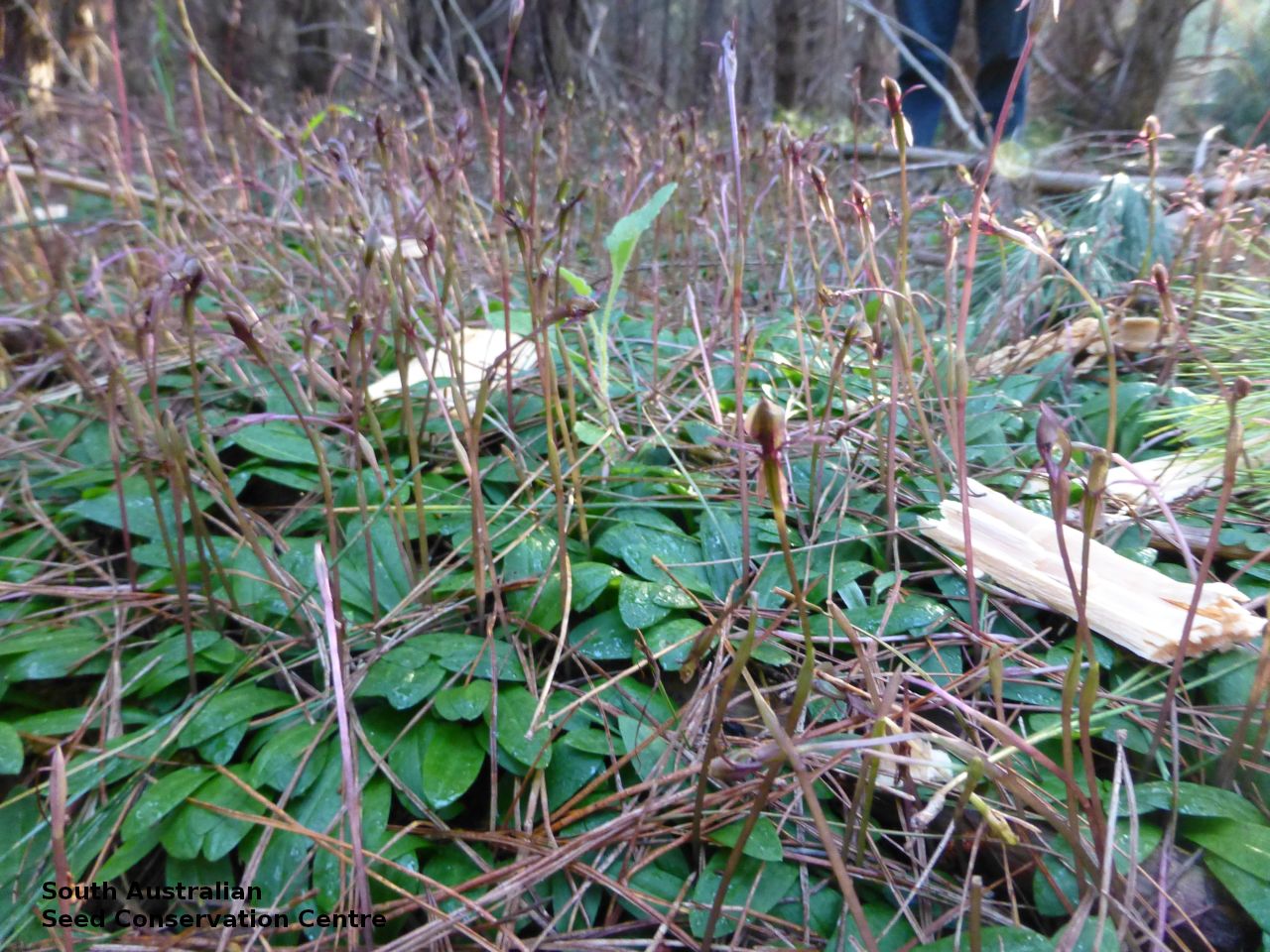
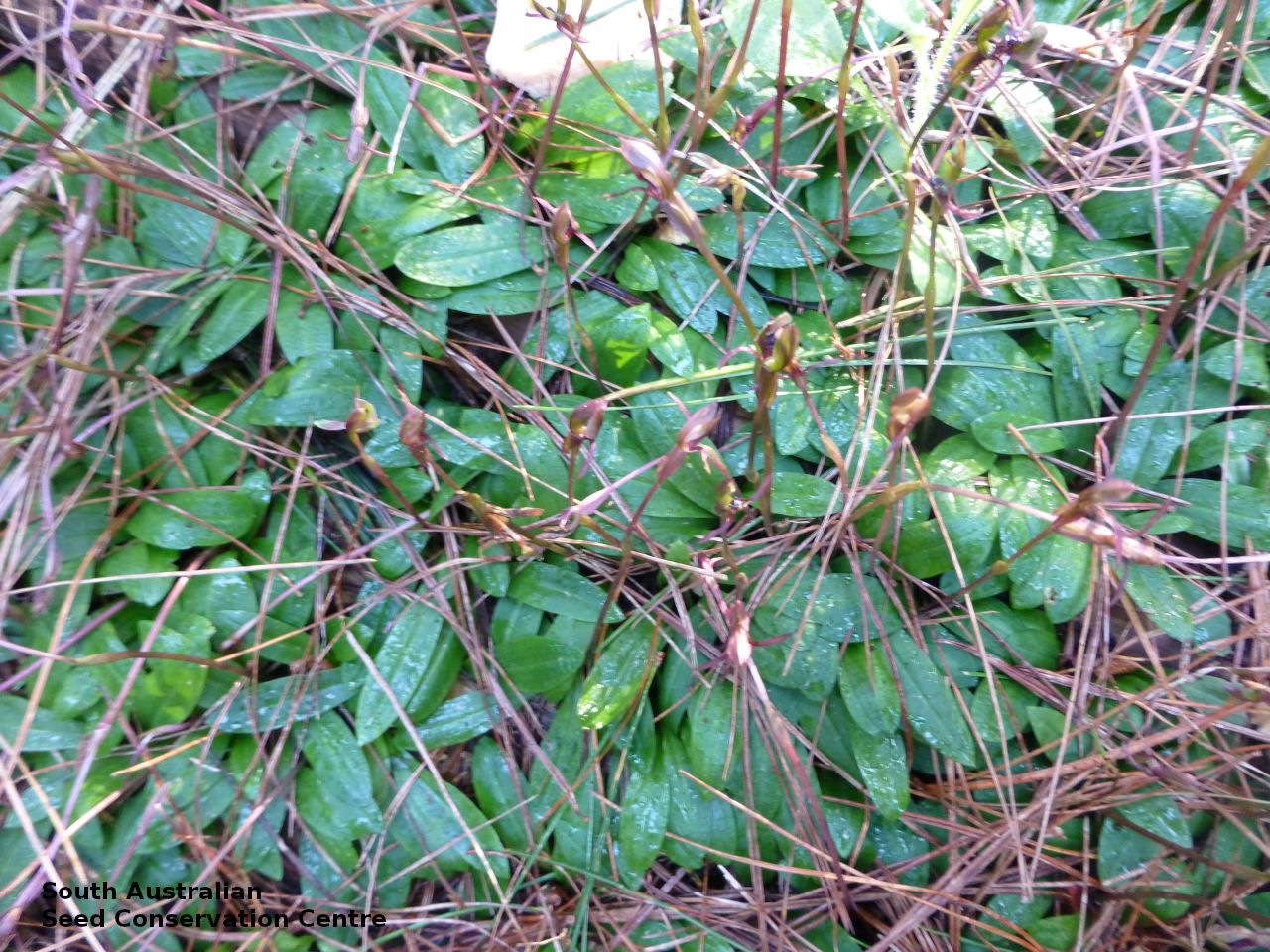
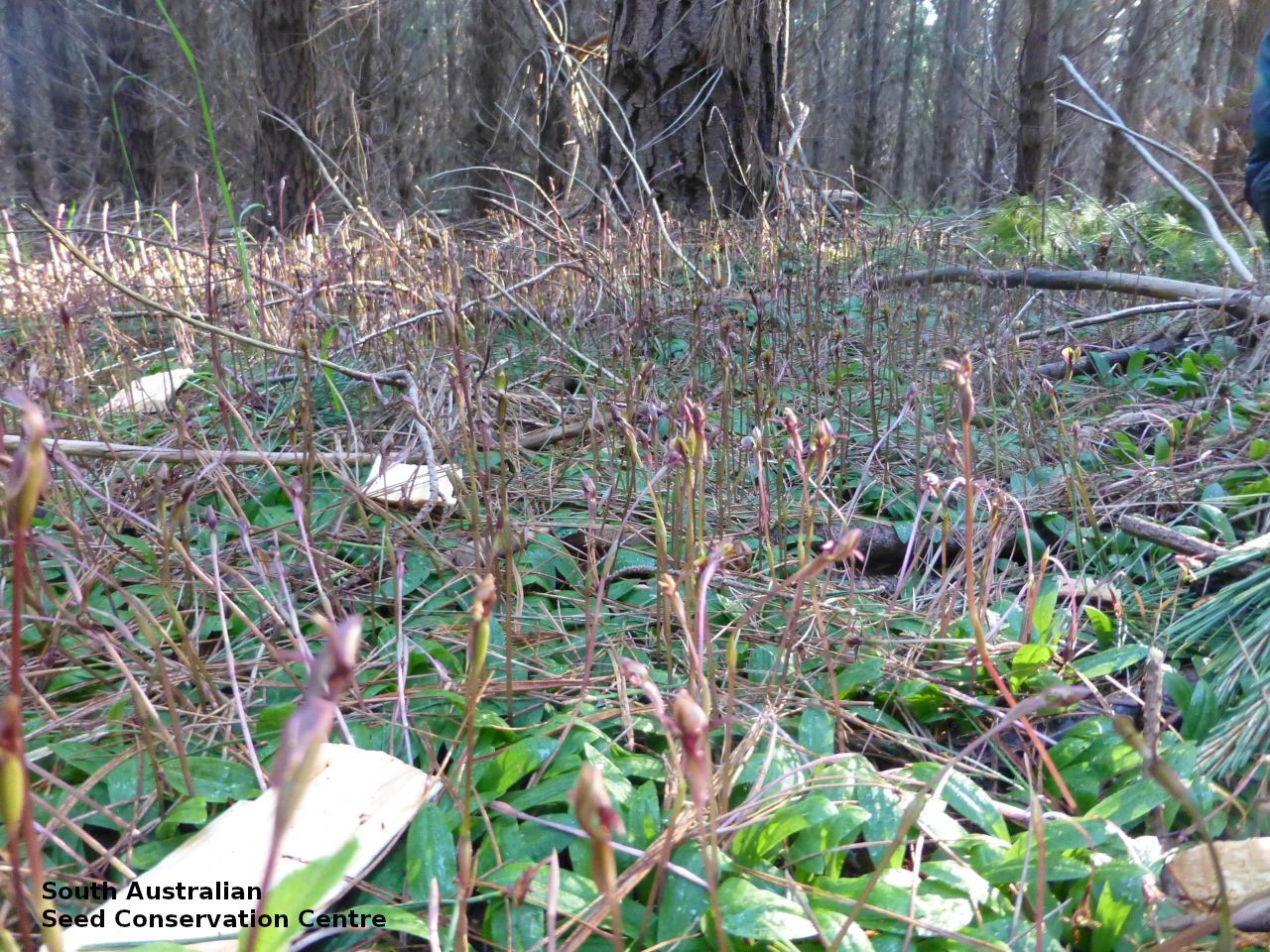
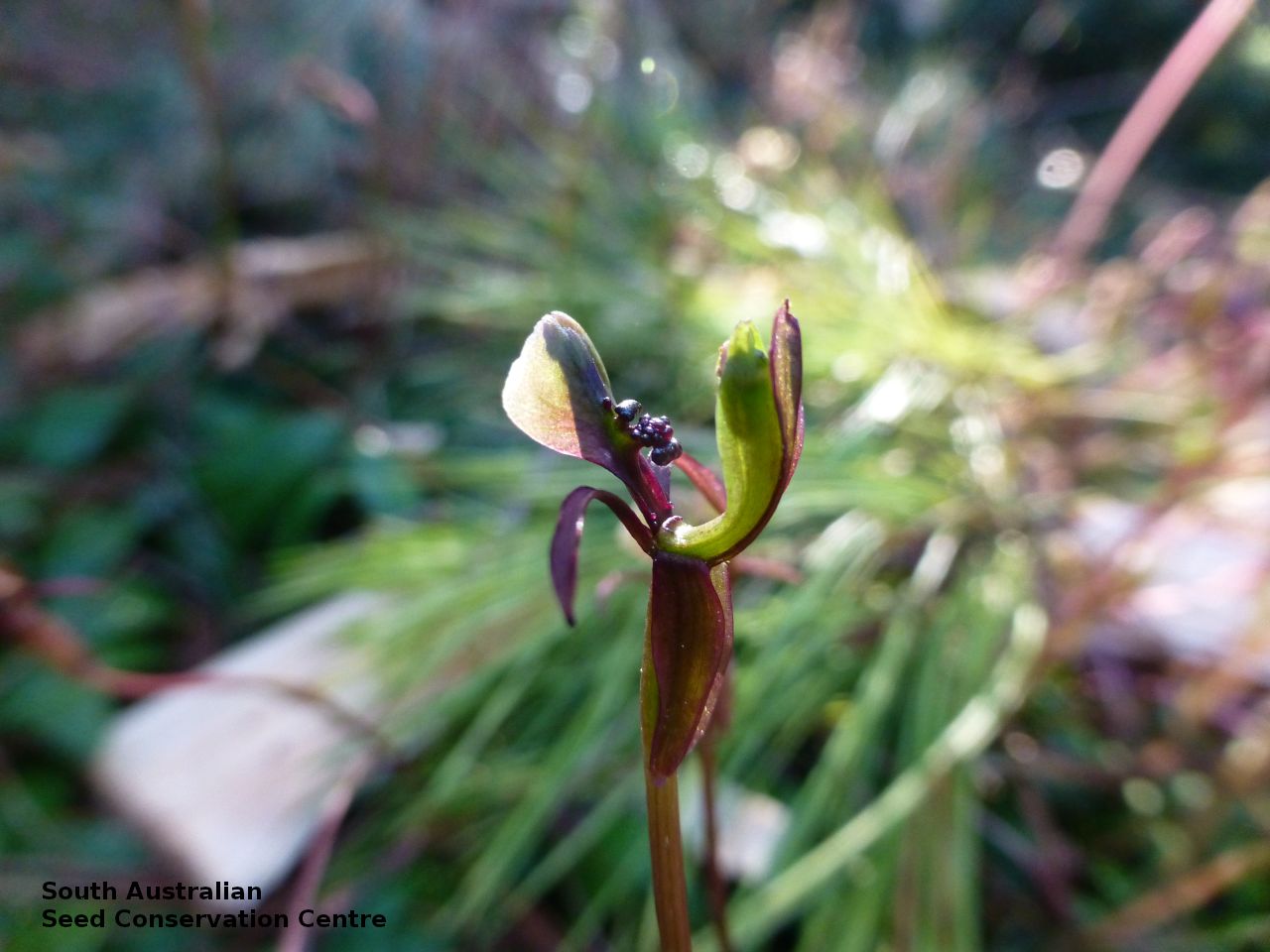
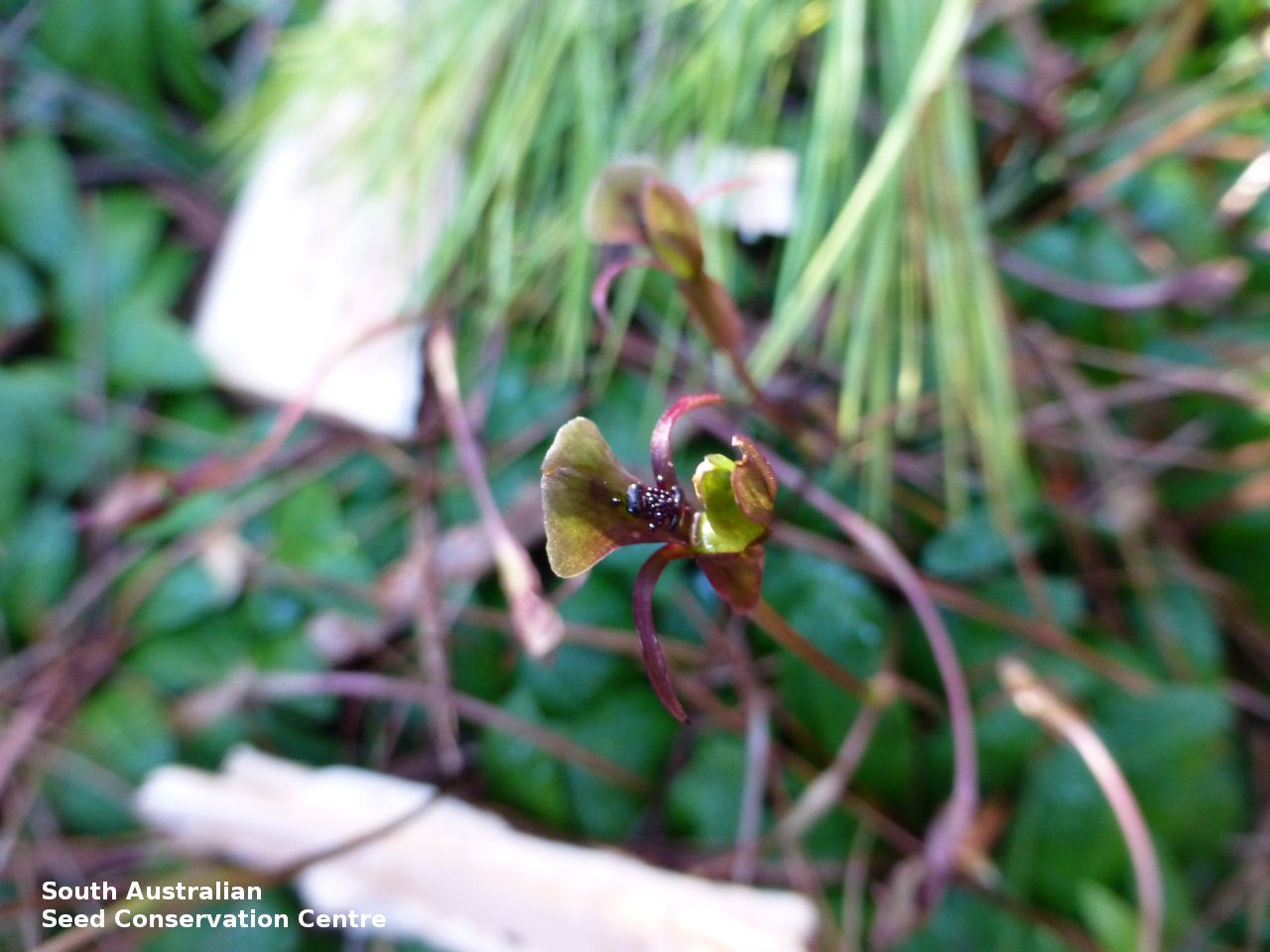


Botanical art
Prior names
Myrmechila trapeziformis
Etymology
Chiloglottis from the Greek 'cheilos' meaning a lip and 'glotta' meaning the entrance to the windpipe, referring to the labellum or glottis resembling the mouth of the windpipe. Trapeziformis means like a trapezium, referring to the shape of the labellum having two parallel and two non-parallel sides.
Distribution and status
Single record from the lower South-east in South Australia, near Penola with a questionable establishment in the southern Mount Lofty Ranges. Also found in New South Wales, Victoria and Tasmania. Native. Very rare in South Australia. Common in the other States.
Herbarium region: South Eastern
NRM region: South East
AVH map: SA distribution map (external link)
Plant description
Small orchid with pinkish stem to 10 cm high. Leaves to 8 cm long and 2 cm wide; narrow-oblong, acute, tapering to the base with margins often undulate or crisped. Flower borne well-above the leaves; mainly purplish, less often green, to 15 mm long, not fleshy; dorsal sepal erect, narrowly cuneate with a short point; lateral sepals spreading, sometimes recurved, narrow-linear; petals deflexed against the ovary, broad-linear; labellum on a short claw, 10-12 mm long, trapeziform or rhomboid with short points; calli dark, chiefly in 2 groups, one toward the claw and one on the anterior half extending to the apex; column shorter than the labellum, widely winged above the centre, the rounded apices higher than the anther. Flowering between September and November. Fruits are brown papery ellipsoid capsule.
Seed collection and propagation
Collect fat capsules as they start to dry and turn brown. Pods will split and release the seeds quickly and will require monitoring. To increase the chances of collecting mature pods, it is recommended that a small breathable bag (ie. Organza bags) be used to enclose the developing capsules. Place the capsules in a container that will hold fine seeds and leave to dry for a few weeks or until the capsule split. Then carefully hold the capsule and tap it gently to release the seeds. Store the seeds with a desiccant such as dried silica beads or dry rice, in an air tight container in a cool and dry place or in liquid nitrogen.